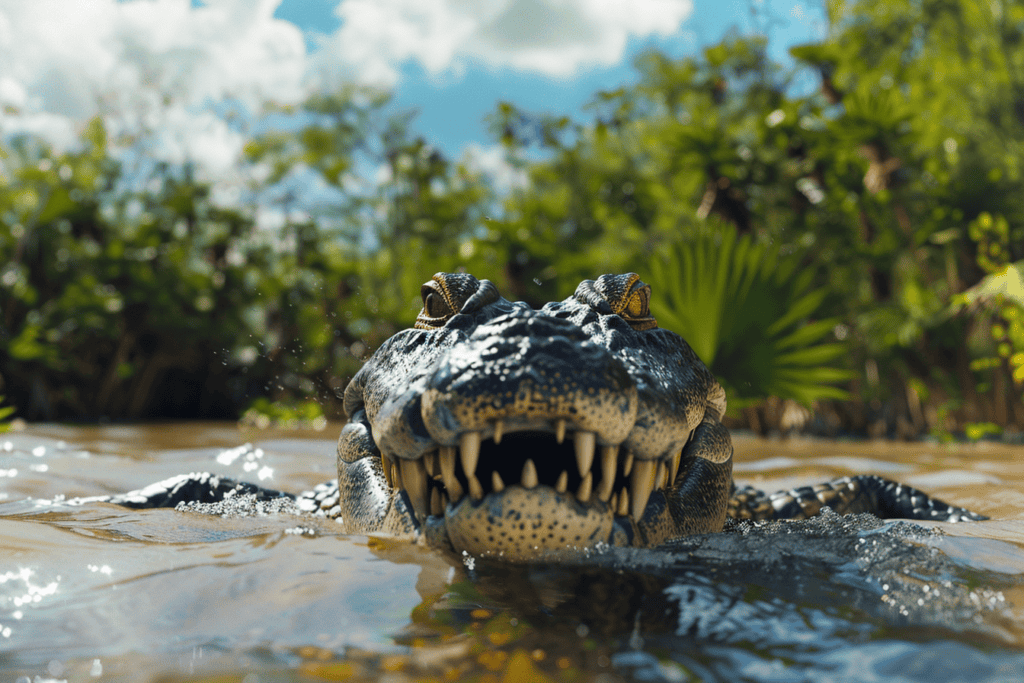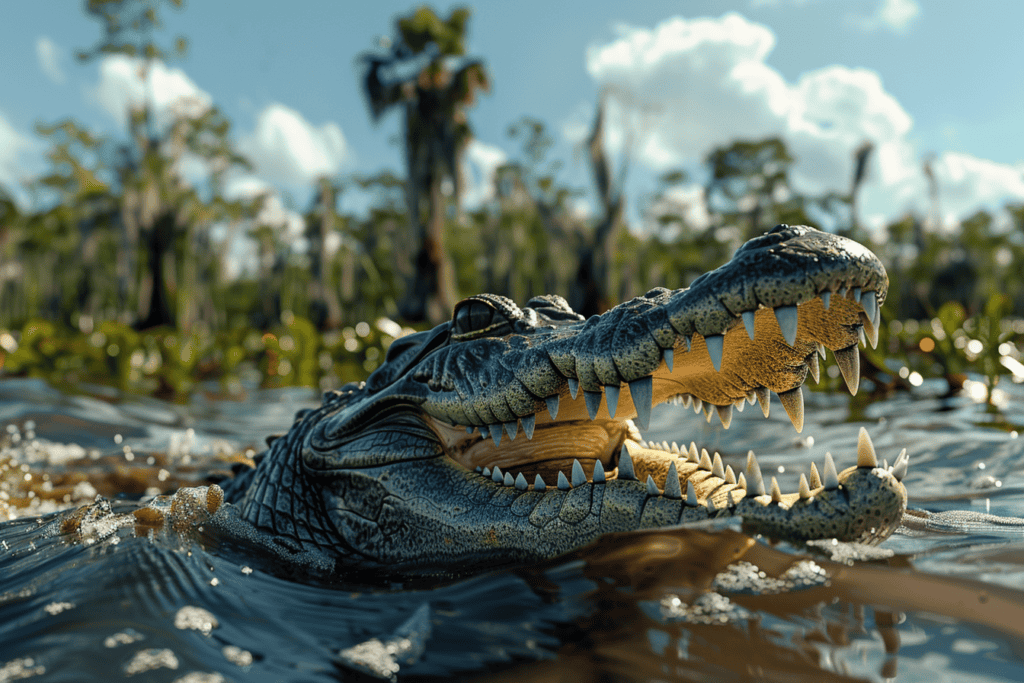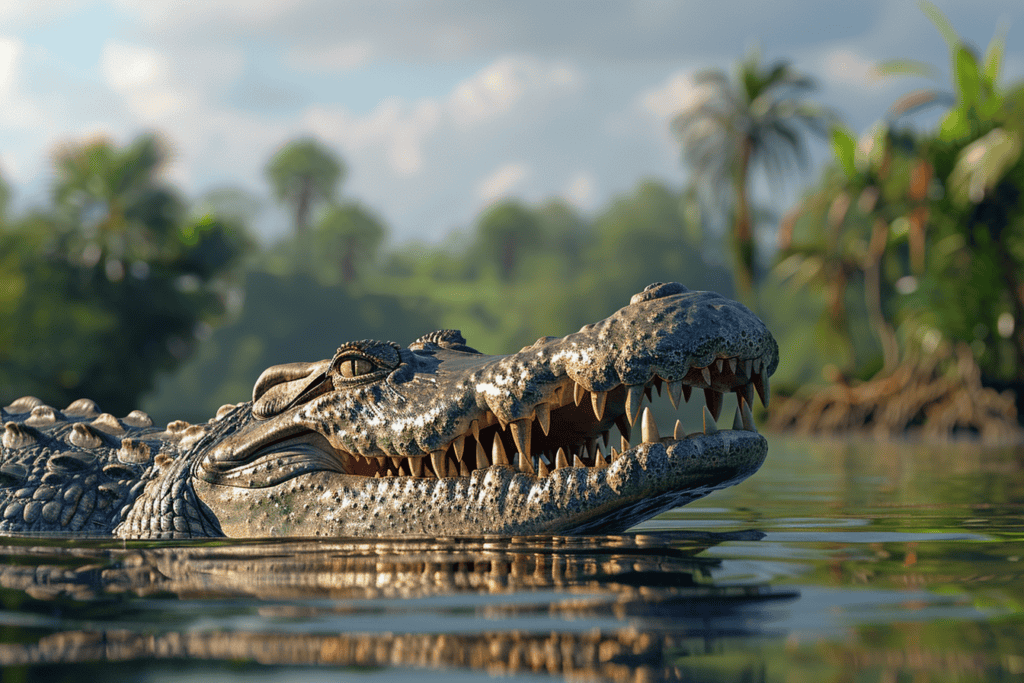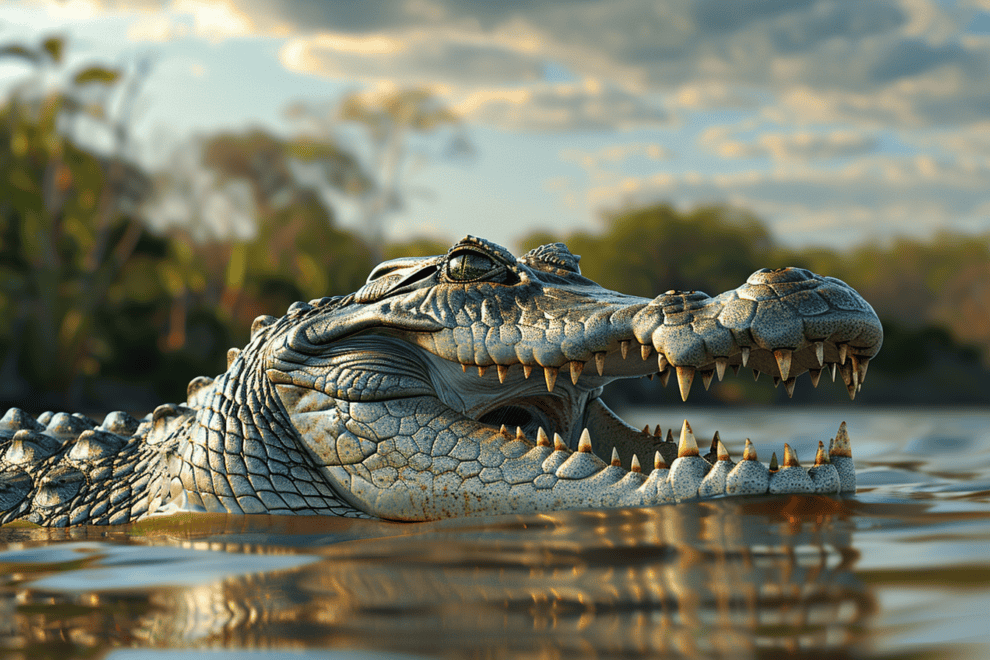Crocodiles are fascinating creatures with a reputation for being fierce predators. They are known for their powerful jaws and bone-crushing bite force.
The force of a crocodile’s bite is truly incredible. It has been estimated that the bite force of a saltwater crocodile can exceed 3,000 pounds per square inch (psi).
To put that in perspective, the average human bite force is only around 160 psi. This means that a crocodile’s bite is strong enough to crush the bones of its prey with ease.

Crocodiles are reptiles that have been around for millions of years, and their bite force is one of the many adaptations that have allowed them to survive for so long.
They use their powerful jaws to catch and hold onto their prey, and their sharp teeth are perfectly designed for tearing flesh.
Despite their fearsome reputation, crocodiles are an important part of many ecosystems and play a vital role in keeping populations of other animals in check.
The Science Behind the Bite
The bite force of crocodiles has been studied extensively by scientists such as Gregory Erickson and Paul Gignac.
They have used computer models and analyzed the anatomy of crocodilian skulls to understand the mechanics of their bite.
One of the key factors that contribute to the strength of their bite is the ventral pterygoideus muscle.This muscle is responsible for closing the jaws and generating the force needed to crush bones.
Crocodiles have unique tooth form and jaw shape that also contribute to their powerful bite.Their teeth are conical and pointed, which allows them to penetrate the tough hide of their prey.
Their jaws are also designed to apply maximum force, with the back of the skull being wider than the front.This allows them to generate more leverage and force when biting down.
Comparing Crocodilian Chomps
Crocodilian species vary in their bite force, with the saltwater crocodile having the strongest bite of all.
According to research by Erickson and Gignac, the bite force of a saltwater crocodile can reach up to 3,700 pounds per square inch (psi).
This is more than double the bite force of a great white shark, and strong enough to crush the skull of a buffalo.
Other crocodilian species also have impressive bite force. For example, the bite force of an American alligator is estimated to be around 2,125 psi, while that of a Nile crocodile is around 2,125 psi.
Even extinct species such as the Tyrannosaurus rex had a powerful bite, capable of exerting one-sixth the force of a saltwater crocodile.
Crocodile Lifestyles and Hunting Habits

Diet and Prey
Crocodiles are powerful carnivores that can consume a wide variety of prey.
They are opportunistic hunters that will eat almost anything that comes their way, including fish, birds, mammals, and reptiles.
Crocodiles are known to be skilled hunters that can patiently wait for hours to ambush their prey.
Their hunting methods can range from stealthy underwater attacks to explosive lunges from the water’s edge.
Crocodiles have a remarkable ability to consume large meals in one sitting.
They have a flexible stomach that can expand to accommodate large prey.
They also have a unique hunting technique that allows them to store food in their throat while they continue to hunt.
This enables them to swallow large prey whole and digest it over a period of time.
Adaptations for Survival
Crocodiles have evolved a number of adaptations that make them highly effective hunters.
They have powerful jaws that can exert bone-crushing force, making them one of the strongest biters in the animal kingdom.
The saltwater crocodile, in particular, has the strongest bite force of any living animal, with a bite strength of around 3,700 psi.
Crocodiles also have a streamlined body shape that helps them move swiftly through the water.
They have a long and muscular tail that propels them forward, while their webbed feet help them steer and maneuver underwater.
Their eyes and ears are located on the top of their head, enabling them to see and hear their prey while remaining submerged.
In addition to their physical adaptations, crocodiles also have impressive feeding abilities.
They have a unique joint in their skull that allows them to open their jaws incredibly wide, making it easier to swallow large prey.
They also have a specialized digestive system that can extract nutrients from even the toughest parts of their prey, such as bones and marrow.
Crocodiles are apex predators that have few natural predators in the wild.
However, they do face threats from humans, who hunt them for their skin and meat. Croc handlers, who work with captive crocodiles, must be extremely cautious due to their strength and bite force.
Crocodiles Through the Ages

Crocodiles are ancient creatures that have been around for millions of years.
Fossil records show that they have existed for over 200 million years, making them one of the oldest living reptiles on earth.
Over the years, they have evolved to become one of the most fearsome predators, with an incredible bite force that can crush bones with ease.
Fossil Records and Evolution
Paleontologists have studied the fossil records of crocodiles and have discovered that they have undergone significant changes over the years.
The earliest crocodiles were small and agile, with long snouts that were perfect for catching fish.
However, as the age of the dinosaurs came to an end, crocodiles evolved to become larger and more powerful.
They developed shorter, wider snouts that were better suited for catching larger prey.
Today, crocodiles are known for their incredible bite force, which is the strongest of any living animal.
The saltwater crocodile, for example, has a bite force of over 3,000 pounds per square inch (psi), which is strong enough to crush the bones of its prey.
In fact, crocodiles have been known to eat everything from fish and birds to tyrannosaurs and other large dinosaurs.
Crocodiles are also known for their extreme osteophagy, which is the ability to eat bones.
They have sharp teeth and powerful jaws that are capable of breaking bones into smaller pieces, which they then swallow whole.
This is a unique adaptation that allows crocodiles to extract as much nutrition as possible from their prey.
Frequently Asked Questions

How does the bite force of a Nile crocodile compare to other animals?
The Nile crocodile has one of the strongest bites in the animal kingdom. Its bite force is measured at around 2,000 pounds per square inch (psi), which is more than enough to crush bones and tear flesh.
In comparison, a lion’s bite force is around 650 psi, and a human’s bite force is only about 160 psi.
Can you explain how much pressure a crocodile’s bite exerts in terms we can easily picture?
To put it in perspective, imagine a crocodile biting down on a bone with the same force as a small car. That’s how much pressure a crocodile’s bite can exert.
This incredible force is due to the crocodile’s powerful jaw muscles and sharp teeth.
What adaptations allow crocodiles to have such a powerful bite?
Crocodiles have several adaptations that allow them to have such a powerful bite.
Their jaws are designed to apply maximum force when closing, but they are also able to partially dislocate their jaws to swallow large prey.
Additionally, their teeth are sharp and serrated, which allows them to grip onto their prey and tear through flesh and bone.
Is it true that crocodiles have the strength to bite through bone, and if so, how do they do it?
Yes, it is true that crocodiles have the strength to bite through bone.
Their teeth are designed to apply high pressure to a small area, which allows them to easily crush bones.
Additionally, their jaws are able to apply a twisting motion, which helps them to break bones into smaller pieces that are easier to swallow.
How does the bite force of a saltwater crocodile measure up to that of a hippopotamus?
The saltwater crocodile has the strongest bite force of any animal, with a bite force of around 3,700 psi.
In comparison, a hippopotamus has a bite force of around 1,800 psi. While the hippopotamus has a powerful bite, it is no match for the saltwater crocodile.
What are some astonishing facts about the bite force of prehistoric crocodiles like the super croc?
Prehistoric crocodiles like the super croc had even more powerful bites than modern crocodiles.
The super croc had a bite force of around 23,000 psi, which is more than six times stronger than that of a saltwater crocodile.
This incredible bite force allowed the super croc to easily take down large prey, including dinosaurs.









